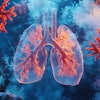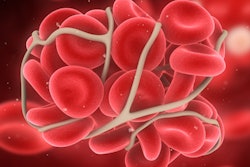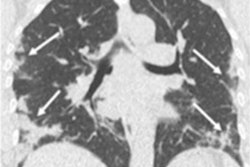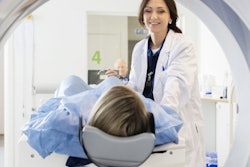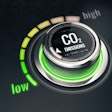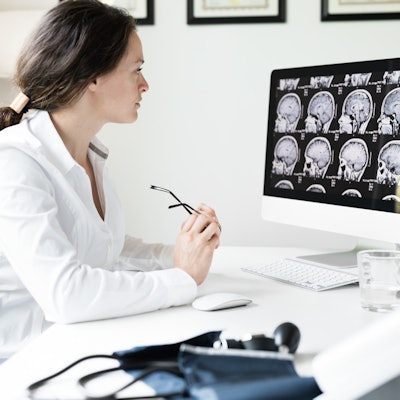
Chest CT should not be used as a diagnostic tool for COVID-19 disease; instead, it should be reserved to evaluate patients with the illness for complications or to investigate alternative diagnoses, according to a literature review published April 16 in the American Journal of Roentgenology.
Research describing CT features of COVID-19 has consisted mostly of retrospective reviews and case studies, and it should be "considered low quality," wrote a team led by Dr. Constantine Raptis of Washington University in Saint Louis, MO.
"This is not to say these studies are not valuable," the group wrote. "Reports of the various CT features of COVID-19 pneumonia are an important first step in helping radiologists identify patients who may have [the illness] in the appropriate clinical environment."
Since the COVID-19 pandemic broke out, clinicians have been debating CT's value as a supplemental tool -- or a replacement -- to reverse transcription polymerase chain reaction (RT-PCR) assays to screen for or diagnose the illness. CT is fast and mostly available, while RT-PCR testing may not be, the group noted.
Professional organizations such as the American College of Radiology (ACR) have recommended against using CT for screening and diagnosis of COVID-19, even though studies have found CT to have high sensitivity and specificity for diagnosing suspected COVID-19 disease.
Raptis and colleagues sought to review research that investigates the use of CT for COVID-19 to evaluate the modality's role in dealing with the disease. The group outlined the following conclusions:
Sensitivity. Even one false-negative finding on CT could result in outbreaks among patients' contacts, the group noted. "If a study cohort contains patients who are more likely to have a true-positive finding and less likely to have a false-negative finding, sensitivity will be overestimated," it wrote.
Specificity. CT doesn't describe features that are necessarily unique to COVID-19; those most characteristic of the disease (peripheral, bilateral ground-glass opacities, primarily in the lower lobes) are also associated with other conditions. "We believe that reports of CT having high specificity in diagnosing COVID-19 pneumonia should be viewed with skepticism," the group wrote.
Implications for clinical practice. Overuse of chest CT can deplete hospital resources and bring infected patients into contact with noninfected individuals, thus increasing the risk of disease transmission, the group noted. "Even in situations in which RT-PCR test results are negative, delayed, or not available, no data of which we are aware support CT as an adequate replacement test because its true sensitivity is unknown ... and because CT findings lack specificity," the authors wrote.
It's better to use CT to evaluate complications of COVID-19 or to explore alternative diagnoses than as a first-line diagnostic tool, the authors concluded.
"As the medical community gains experience in treating patients with COVID-19 pneumonia, high-quality data hopefully will emerge and will support a more expanded role for CT," they wrote. "We (and the radiology community at large) will welcome any such data to improve the care of patients with this disease."





